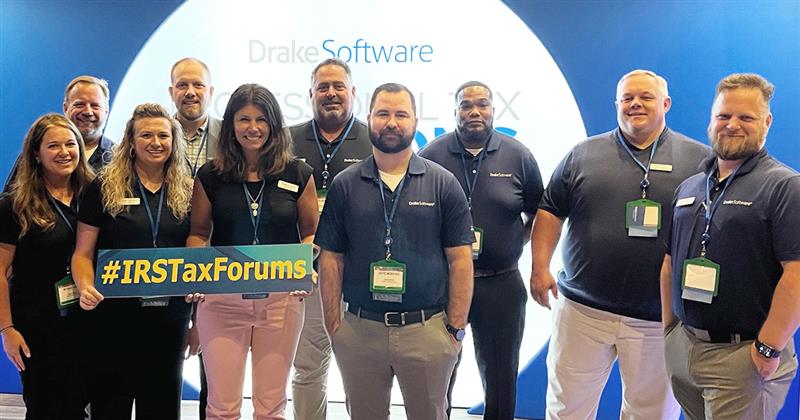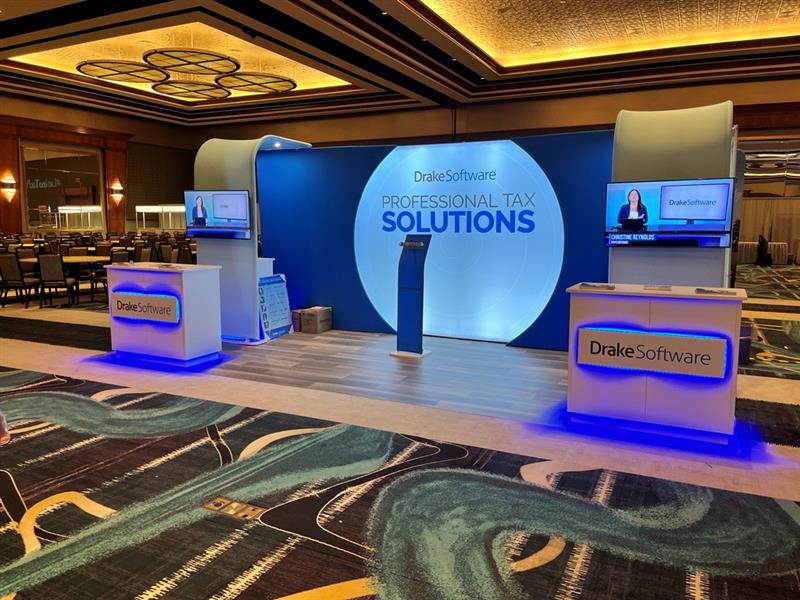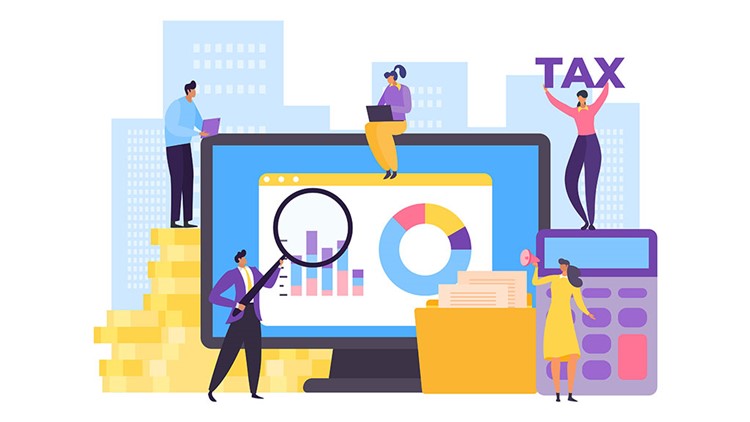by Taxing Subjects | Mar 27, 2024 | Tax Tips and News
Filing deadlines often change for taxpayers in regions that experience natural disasters. When these extreme weather events hit, the IRS frequently provides tax due date extensions. The relaxed due dates are intended to give more time to the individuals and businesses impacted by the natural disaster to prioritize relief and recovery instead of drawing their focus to a filing deadline. Following are notices for the upcoming tax season. We encourage you to visit the Tax Relief in Disaster Situations page on the IRS website for the very latest updates.
Spokane Wildfires
Wildfires burned in Spokane, Washington beginning August, 18 2024. Taxpayers in Spokane County may qualify for a tax filing extension due June 17, 2024 designated by the IRS to encourage disaster relief. The full guidelines on qualifications are available at this IRS Information link.
IRS Information on Spokane Fires
Strong Storms and Flooding in San Diego County
Fierce weather struck San Diego on January 21, 2024 causing serious damage to individuals and infrastructure. The IRS recently declared that those who qualify (as having their business or property hurt by the disasters) will have until June 17, 2024 to file their taxes.
IRS Information on San Diego Serious Weather Tax Relief
Michigan Severe Weather: Flooding, Tornadoes, and Storms
Powerful storms rocked Michigan August 24, 2023. FEMA ruled that many counties experienced natural disasters and the IRS will allow them to qualify for a filing extension which now has taxes due June 17, 2024. All counties which qualify are included in this IRS news release link.
IRS Information on Michigan Storm Damage Tax Relief
Mudslides and Other Extreme Weather in West Virginia
Landslides, mudslides, flooding, and storm damage hit West Virginia counties August 28, 2023. Taxpayers in the region may qualify for extra time filing taxes with a new date of June 17th, 2024 established by the IRS.
IRS Information on Relief to Those Impacted by West Virginia Extreme Weather
Storm Destruction in the State of Maine
Several counties in Maine will experience a tax payment due date change to June 17, 2024. This decisions comes in the wake of heavy storms which hit the region December 17, 2023. A list of all areas designated by the IRS under the relief order can be found below.
IRS Information on Tax Extensions for Maine Storm Damage
Rhode Island Storms, Tornado, and Flooding
A tax deadline change to June 17, 2024 was issued by the IRS to victims of extreme weather occurrences in Providence County. Citizens and businesses of the county affected by the disasters have been given additional time to get their taxes in order because of the damage caused by the intense weather of September 10, 2023.
IRS Information on Rhode Island Severe Weather Filing Extensions
Connecticut Storms, Flooding, and Dam Breach
The recent severe weather on January 10, 2024 caused widespread damage to taxpayers in Connecticut. To offer relief to those affected in New London County, and the Mogehan and Mashantucket Pequot Tribal Nations, the IRS extended their dues until June 17, 2024.
IRS Information on Connecticut Storm Tax Relief
Tornado Storm Damage
A recently announced filing deadline for both individuals and business organizations in parts of Tennessee is now in effect. The severe tornadoes prompted the IRS to extend the due date for payments to June 17, 2024. People, households, and entities with addresses inside the area designated by FEMA are automatically able to make use of the extension. They do not need to contact the IRS to become eligible.
IRS Information on Relief for Tennessee Tornadoes
California Storm Victims
55 of 58 counties in California qualify for a 2022 tax season filing extension which is now due on November 16, 2023. This deadline extension originates from strong storms in the region last winter which caused flooding, landslides, and other severe weather phenomena.
IRS Information on California Storm Victims
Terrorist Attacks in Israel
The IRS adjusts due dates for certain payments and filing that fall between Oct. 7, 2023 and Oct. 7, 2024. Individuals such as humanitarian workers and businesses whose central place of operation is Israel may be able to receive this relief.
IRS Information on Terrorist Impacted Individuals and Entities in Israel
Louisiana Seawater Intrusion
Individuals or businesses residing in Jefferson, Orleans, Plaquemines and St. Bernard parishes may now be able to delay filing returns and paying taxes until Feb, 15, 2024.
IRS Information on Louisiana Seawater Intrusion Tax Relief
Drought Impacted Industry
Qualifying farmers and ranchers in 49 states, two U.S. Territories, and D.C. who were forced to sell livestock due to drought conditions will have an extended window to replace the livestock and report gains.
IRS Information on Drought Impacted Livestock Sales
The Hawaii Wildfires
Parts of Hawaii have been granted an individual and business return filing extension until February 15th, 2024 to help the victims focus on disaster recovery.
IRS information on Hawaiian Wildfires
Hurricane Lee
The Federal Emergency Management Agency issued a disaster declaration for all counties in Massachusetts and Maine. These states are eligible for tax relief and their tax dates are now rescheduled to February 15th.
More IRS Information on Hurricane Lee
Hurricane Idalia
The IRS has announced tax relief packages for regions in the states of Florida, Georgia, and South Carolina to help those affected concentrate on rebuilding after the storm. Tax payments are now pushed back until February 15th, 2024.
IRS information on Hurricane Idalia
– Article provided by Taxing Subjects.
by | Aug 26, 2023 | Tax Tips and News
Any successful tax preparer knows how to navigate a constant state of flux, as financial regulations, laws, and client expectations can change at a moment’s notice. Staying informed, thus, is not just a preference – it’s a necessity. Clients rely upon your expertise as a tax preparer to help guide them through the complexities of the tax code, uncover opportunities for savings, and ensure compliance with regulations. In this constantly progressing environment, the role of trustworthy news sources becomes supreme. News is the compass that guides your practice, enabling you to provide the best service to your clients while maintaining professional integrity.
The reality of the dynamic tax industry underscores the need for tax preparers to stay abreast of legislative updates and tax law changes, but the scope of staying informed goes far beyond tracking changes in the tax code. In this post, your team at Drake Software hopes to delve into the practicalities of how staying informed can give you a competitive edge in your career as a preparer.
The Significance of News
The intricate nature of tax laws, regulations, and financial dynamics demands a constant awareness of the latest information and news within the industry. Remaining up to date isn’t merely a matter of maintaining pace; it’s about providing the best possible services to clients, ensuring compliance, and upholding professional standards. Staying ahead of changes ensures that tax preparers can navigate the complexities of the tax code with accuracy and confidence.
The significance of staying informed extends to industry trends and insights. Tax professionals must be attuned to emerging trends to remain relevant and competitive. For instance, technology updates play a pivotal role in shaping the efficiency and accuracy of tax preparation processes. In seeking knowledge about the latest software, tools, and automation options, tax preparers are empowered to streamline their workflow and deliver enhanced services.
Similarly, a focus on clientele is at the core of tax preparation, and personalized strategies are essential for catering to diverse financial scenarios characteristic of an assorted client base. In this way, the value of news that showcases client case studies comes into play, as well. Learning from real-life examples equips tax professionals with practical insights into tackling unique challenges and finding tailored solutions for clients. In seeking relevant news, tax preparers can be set up for success in better serving their own clients.
The IRS, as the authoritative source of tax regulations, announcements, and guidelines, also reinforces the importance of staying informed. As tax preparers receive timely updates from the IRS, they improve the likelihood of compliance with regulatory changes, avoiding penalties and errors that could arise from outdated information.
The importance of news for tax preparers is a fundamental precursor to success in the field, whether in the form of legislative updates, industry trends, client case studies, technology advancements, or ethical considerations. Staying informed is a demonstrated commitment to providing the highest level of service to clients, upholding professional integrity, and navigating the intricate web of tax regulations with finesse and confidence. As the tax industry continues to evolve, embracing news as a cornerstone of professional growth is a pathway to excellence in the realm of tax preparation.
Subject Areas of Importance
As mentioned in the previous section, there are a multitude of different subject areas on which tax preparers can receive industry news. We’ve highlighted a few high-level examples to aid you in seeking streamlined, personalized content that best serves you in your practice as a tax preparer.
1. Legislative Updates and Tax Law Changes
Applying to virtually all preparers in the industry, staying current with the latest changes in tax laws and regulations is essential. Accuracy and education in this area ensures accurate tax preparation, compliance, and the ability to offer clients up-to-date advice, ultimately safeguarding their financial interests.
2. Industry Trends and Insights
Explore emerging trends shaping the tax industry and adjust as needed to better meet evolving client needs. You may also learn about new strategies or practices which can help you maintain a competitive edge in a rapidly growing career landscape.
3. Tax Planning Strategies
Another source of news you might seek is effective tax-saving strategies and planning techniques. This area is crucial to optimize clients’ financial situations, maximize deductions and credits, and provide customized advice that minimizes tax liabilities within the bounds of the law.
4. Technology Advancements
Keep up with the latest technology tools transforming tax preparation. Staying informed about technological advancements enables you to leverage automation, AI, and streamlined processes, leading to greater efficiency, accuracy, and client satisfaction.
5. Client Case Studies and Success Stories
Learn from real-life scenarios and successful outcomes to supplement your knowledge of differing client circumstances, ultimately aiding your expertise in tax preparation. Understanding client cases helps you apply proven strategies to complex situations, delivering personalized solutions that resonate with clients’ unique needs.
6. IRS Announcements and Guidelines
Continuously seek and stay up to date with official IRS announcements and guidelines. Pursuing information from the IRS consistently will help you remain compliant with IRS regulations, report accurately, and avoid costly penalties that could result from outdated or incorrect information.
7. Ethical and Professional Standards
Research news in this subject area to increase your knowledge of ethical considerations and professional standards. Staying informed about ethics helps you maintain integrity, uphold confidentiality, and navigate potential conflicts of interest, fostering trust with clients and peers.
8. State and Local Tax Updates
Depending on your location, you may also want to stay informed about state and local tax laws and regulations. This knowledge is essential when serving clients across different jurisdictions, ensuring accurate compliance and preventing potential errors.
9. Continuing Education Opportunities
Another excellent subject area to pursue is ongoing learning through various educational resources. Staying informed about continuing education opportunities allows you to sharpen your skills, stay updated on industry developments, and maintain professional certifications.
10. Personal Finance Insights
Finally, you may seek news specifically targeted to help you gain insights into personal finance, investments, and retirement planning. Understanding personal finance helps you provide holistic advice to clients, addressing their financial concerns beyond tax preparation.
By exploring each of these subject areas, tax professionals can enhance their expertise, offer more value to clients, and navigate the complexities of tax preparation with confidence.
Where To Go
Now that we’ve established the type of news you may want to pursue as a tax preparer, we also want to provide a few resources so that you know where to find such information.
The official news source from the Internal Revenue Service provides updates on tax law changes, regulations, and announcements. Alternatively, another IRS webpage that is helpful for tax preparers specifically is the Tax Pro News and Resources page.
A publication of the American Institute of CPAs (AICPA) providing in-depth articles on tax planning strategies and insights.
Published by the AICPA, this journal includes real-world case studies and success stories relevant to tax professionals.
This resource for National Association of Tax Professionals members is filled with relevant articles, tax code updates, Q&As and special industry announcements, guides and studies. This TAXPRO Weekly email newsletter covers the most pressing tax law updates, current developments and resources.
Our comprehensive blog offers multiple posts per week, intentionally strategized to serve tax preparers on a range of subjects. Whether you’re a seasoned professional in the industry or seeking to begin your career as a tax professional, we are guaranteed to have a post for you to help you better serve your clients, streamline your processes, and provide timely information regarding industry updates.
In the ever-evolving field of tax preparation, the significance of staying informed cannot be overstated. Consistently staying informed from a variety of news platforms offers necessary guidance and direction for your practice as a tax professional, from navigating tax codes and changing regulations to prioritizing your clients’ dynamic needs. By immersing yourself in legislative updates, industry trends, technological advancements, and ethical considerations, you can empower yourself to provide accurate guidance, innovative strategies, and unwavering professionalism.
– Story provided by TaxingSubjects.com
by | Aug 25, 2023 | Tax Tips and News
As recovery efforts are underway for victims of the devastating wildfires in Hawaii, the Internal Revenue Service is moving to give survivors one less thing to worry about.
The agency has launched its tax relief package for victims in Maui and Hawaii counties that basically delays an array of federal individual and business tax deadlines until February 15, 2024.
Relief is available to any taxpayer who lived or operated a business within the federal disaster declaration issued by the Federal Emergency Management Agency (FEMA). A list of towns and other localities currently included is available on the disaster relief page of the IRS.gov website.
Wildfire Victims Have Until February 15 to file 2022 Returns and Pay Tax Due.
The postponement period covers a wide range of filing and payment deadlines that would otherwise have occurred between August 8 of this year and the new deadline of February 15, 2024.
The new 2024 deadline includes:
- Taxpayers with a valid extension that is due to expire on Oct. 16, 2023. It should be noted, however, that since payments for 2022 tax due were required before the wildfire event, those payments aren’t covered by the new 2024 deadline.
- Quarterly estimated income tax payments normally due on Sept. 15, 2023, and Jan 16, 2024.
- Quarterly payroll and excise tax tax returns that otherwise would have been due on Oct. 31, 2023, and Jan. 31, 2024.
- Calendar-year partnerships and S corporations with 2022 extensions due to expire Sept. 15.
- Calendar-year partnerships with 2022 extensions due to expire on Oct. 16.
- Calendar-year tax-exempt organizations with extensions expiring on Nov. 15.
- Business taxpayers should remember that penalties for failure to make required payroll and excise tax deposits between Aug. 8 and Sept. 7 are abated, as long as deposits are made by Sept. 7.
Complete details are available on other returns and payments on the Disaster Assistance and Emergency Relief for Individuals and Businesses page on the IRS website.
Relief Package Also Covers Others Affected by the Disaster.
What about others who are affected by the fires, but aren’t residents of the disaster area? Consider the case of a taxpayer who lives outside the disaster area but lost the records necessary to meet a tax deadline in the disaster. These victims should call the IRS at 866-562-5227 to find out what relief the agency may have available for them.
Conversely, taxpayers who live within the federal disaster area do not need to call the IRS in order to qualify for the tax relief package. The IRS says benefits are tied to the taxpayer’s address of record on file with the agency, and so are enabled automatically when their returns are received.
In some cases, taxpayers may not have an address of record on file with the agency, because, for example, they may have moved into the disaster area after they filed their return. Due to circumstances, these taxpayers could find a late-filing or late-payment notice in their mailbox. These taxpayers should call the phone number stated on their printed notice letter to get the penalty abated, per the IRS.
Filing After the Fire Explained.
When it comes down to how to claim their losses on a tax return, it is the taxpayer’s choice.
Individual and business taxpayers within the federal disaster area can claim their uninsured or unreimbursed losses from the disaster in one of two ways. The loss can be claimed on the return for the year the loss occurred (in this case, on the 2023 return, normally filed in 2024) or on the return for the prior year, which would be 2022.
Any return claiming a disaster loss should have the FEMA declaration number, DR-4724-HI, displayed on the return. For more details on claiming a loss, check out Publication 547.
In general, qualified disaster relief payments are excluded from gross income. This usually means money received from a government agency for reasonable and necessary expenses, whether personal, family, living or funeral expenses, for repair or rehabilitation of a home, or for repair or replacement of a home’s contents.
More information on disaster payments is available in IRS Publication 525 on the IRS website.
Source: IRS: Hawaii wildfire victims qualify for tax relief; Oct. 16 deadline, other dates postponed to Feb. 15
– Story provided by TaxingSubjects.com
by | Aug 16, 2023 | Tax Tips and News
The 2023 Software Survey conducted by the National Association of Tax Professionals (NATP) unveils insightful findings regarding tax professionals’ experiences with their chosen tax preparation software. Covering attributes ranging from reliability to customer support, the survey provides a comprehensive view of the quality of service users can anticipate from the different software platforms.
In the NATP 2023 Software Survey which uses a scale of 1 to 5, Drake Software received 4 stars and above in every survey category. Drake claimed an impressive Net Promoter Score rating of excellent and received standout rankings:
- Overall Satisfaction: 4.5
- Software conversion package: 4.3
- Software compatibility with user network: 4.5
- Reliability of software: 4.5
- Reasonable price: 4.5
- Ease of software installation: 4.75
- Ease of learning software: 4.5
- Ease of working with software: 4.5
- Ease of reviewing tax returns: 4.5
- Ease of e-filing: 4.75
- Timely software updates after federal tax law changes/updates: 4.75
- Timely software updates after state law changes/updates: 4.5
- Technical support from software company: 4.4
- Customer service from software company: 4.5
- Accuracy of software in regards to federal tax law: 4.6
- Accuracy of software in regards to state law: 4.25
Drake Software users made up an astounding 41% of the survey respondents; the next highest was 15%. We are so grateful to everyone who participated and shared their experiences. We are proud to stand by our industry-wide reputation for delivering award-winning tax preparation solutions, from comprehensive tax preparation software to seamless software conversion and ease of use.
For more information on tax preparation solutions from Drake Software, visit our Products page or download a Free Trial today.
Source: NATP 2023 Software Survey
– Story provided by TaxingSubjects.com
by | Aug 9, 2023 | Tax Tips and News
Is contactless tax preparation the future of the industry?
While the 2020 filing season jettisoned the tax industry into a virtual arena, the 2023 season seems to indicate that contactless tax preparation has some staying power as tax professionals continue to adapt to the needs and preferences of their clients.
Drake Software has been keeping an eye on the contactless prep trend through a yearly survey of tax professionals. More than 900 participants from tax offices around the nation (including attorneys, CPAs, EAs, and preparers) shared their preferences and insight in the 2023 Contactless Tax Preparation survey.
Participants answered more than 20 questions addressing topics such as the following:
- Client interest in no-contact, completely virtual preparation
- Client-facing portal systems
- The number of returns prepared with no in-office contact
- Preparer interest in providing contactless services post-pandemic
For the results, download the Drake Software 2022 Contactless Tax Preparation Infographic.
– Story provided by TaxingSubjects.com
by | Aug 6, 2023 | Tax Tips and News
Summer events for the tax industry are in full swing as professionals from around the country gather to share resources, insight, software, and tools for the 2024 filing season.
The Drake Software team has enjoyed the time on the road and the opportunities to meet users, demonstrate our tax prep solutions, and share industry expertise.

Engaging with the Drake Software Team
Attending IRS Nationwide Tax Forums and trade shows provides an excellent opportunity to interact with the Drake Software team directly. Our representatives will be available at the Drake Software booth to answer your questions, provide personalized solutions, and guide you through the process of making the most of your tax software.

Hands-on Demonstrations
One of the key highlights of Drake Software’s presence at these events is the opportunity to witness live, hands-on demonstrations of our cutting-edge tax software. Attendees will get a chance to explore the features that make Drake Software an industry favorite, such as its user-friendly interface, advanced tax preparation tools, and efficient e-filing capabilities. Tax professionals can gain insights into optimizing their workflows and enhancing their tax preparation efficiency.

Exclusive Workshops and Training Sessions
To maximize the benefits of participating in IRS Tax Forums and other events, Drake Software is organizing exclusive workshops and training sessions for attendees. These sessions are conducted by our seasoned experts, offering valuable insights into leveraging the software’s capabilities effectively.
Among the standout sessions are John Sapp’s presentation on “Protecting Taxpayer Data from Cybercriminals” at AICPA, Ann Cambell and Christine Reynolds’ Lunch and Learn session on DSUE at the NAEA Convention, and Jared Ballew’s talk on Written Information Security Plans (WISP) at the IRS Tax Forums. Whether you’re a seasoned tax professional or just starting in the field, these training sessions will help you gain a competitive edge and boost your tax preparation skills.
More opportunities to meet Drake Software on the road
IRS Nationwide Tax Forums and other trade shows serve as an excellent platform for tax professionals to come together, share knowledge, learn from industry experts, and exchange ideas.
For more opportunities to meet with us in person, visit our Trade Shows page.
We look forward to building even more meaningful connections within the tax industry!
– Story provided by TaxingSubjects.com



![2023 Contactless Tax Preparation [Infographic]](https://timhollandcpa.com/wp-content/uploads/2023/08/2023-contactless-tax-preparation-infographic.png)



